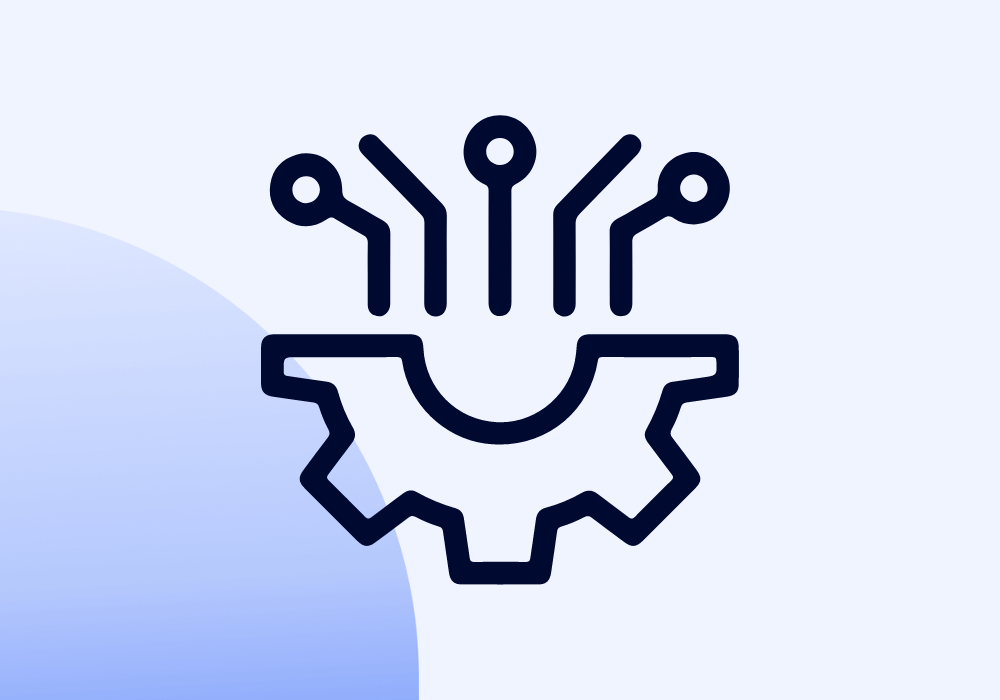Mastering HubSpot SEO: A Guide for B2B Marketers
Unlocking the Power of AI: A Marketer's Guide to Prompt Engineering

Are you struggling to keep up with content creation while others seem to have a system that works?
You’re not alone. As a business owner or B2B marketer, you’ve likely heard about AI tools like ChatGPT and Claude. But the real challenge? Knowing where to start and how to use them.
The good news is mastering AI doesn't have to be complicated.
With prompt engineering, you’ll unlock the ability to guide AI tools like a creative partner—one that handles repetitive tasks, leaving you to focus on strategy and growth.
In this guide, you'll learn how to leverage AI to boost productivity and get accurate results.
- Understanding Prompt Engineering
- Examples of Effective and Ineffective Prompts
- The Prompt Engineering Framework for Marketers
- Advanced Prompt Engineering Techniques for Marketers
Understanding Prompt Engineering
So, what exactly is prompt engineering?
Think of it as asking the right questions to get the best possible answers from an AI language model.
It's like having a conversation where you guide the AI to produce the content or code you need by carefully crafting your prompts.
You've probably heard terms such as LLMs tossed around lately.
Some people make it seem like prompt engineering is a quick fix, offering long lists of prompts that promise instant results.
But here's the real deal:
Prompt engineering genuinely works when done right. It's about bridging the gap between what you intend and what the AI delivers.
Why does this matter to you as a marketer or business owner?
If you've ever tried using AI tools and felt the responses could have been better, the issue might not be the AI itself but how you interact with it.
Language models like ChatGPT and Claude operate based on patterns in data—they don't "understand" content the way we do.
If your prompts are vague or ambiguous, you'll likely get outputs that miss the point.
Imagine giving directions to someone unfamiliar with your city.
The more precise and detailed you are, the better your chances of reaching the destination without getting lost.
The same principle applies to AI.
By being specific and transparent in your prompts, you guide the AI to produce content that aligns with your goals.
AI becomes your creative partner by learning prompt engineering, helping you scale content creation and automate tedious tasks.
By mastering the skill of prompt engineering, you can complete complex tasks such as content creation, SEO optimization, competitive analysis, and much more in a fraction of the time you used to.
But to tap into this potential, you need to know how to "speak" to the AI effectively—and that's where prompt engineering comes into play.
Examples of Effective and Ineffective Prompts
The way you phrase your prompts can dramatically impact the quality of the AI's output, especially when creating content such as a blog post.
Let’s explore an ineffective and an effective prompt, both focused on maritime technology.
Imagine you tell the AI: "Write a blog post about the 2023 IMO Strategy."
At first glance, this might seem straightforward. But this prompt is too vague.
In this example, the AI lacks critical information such as your target audience, the specific aspects of the IMO strategy you want to focus on, and the desired tone or style.
As a result, it might generate a generic blog post that only partially meets your needs.
Now, let's see how you can improve that prompt:
"You are an experienced content writer for a maritime technology blog. Write a 1,000-word blog post about three key technologies to help the shipping industry meet the IMO 2030 emission targets. Your target audience is maritime industry professionals, and decision-makers focused on sustainability and compliance with international emission standards. Begin with an engaging introduction highlighting the urgency of reducing emissions in the shipping industry and the importance of the IMO 2030 strategy. Include three key technologies—cleaner fuels, energy-efficient ship designs, and carbon capture systems—each with a heading and detailed explanation. Provide real-world examples of companies or projects successfully implementing these technologies. Use a professional yet accessible tone. Write in short paragraphs for easy readability. Incorporate keywords like 'IMO 2030,' 'emission reduction technologies,' and 'maritime sustainability' for SEO optimization. For instance, when discussing cleaner fuels, mention the adoption of LNG-powered ships by major shipping lines. Remember to end with a call to action encouraging readers to explore your company’s latest whitepaper on sustainable maritime solutions."
By providing specific details and context, you're guiding the AI to produce a blog post that aligns closely with your objectives.
In this refined prompt, you've defined the role (maritime technology consultant), the target audience (shipping industry professionals), the topic and title, the desired length, the tone, and the structure.
You've also included instructions about SEO optimization and the need for real-world examples. This level of detail ensures the AI produces content that is more relevant, actionable, and tailored to your needs.
By thoughtfully crafting your prompts, you're effectively collaborating with the AI to produce content that meets your specific needs.
It's like giving a detailed brief to a human writer—the more precise you are, the better the results.
Let’s break down the framework behind creating good prompts in the next section.
The Prompt Engineering Framework for Marketers
Now that you've seen how important it is to craft effective prompts, let's dive into a simple framework to help you get the most out of AI tools like ChatGPT and Claude.
Think of this as your roadmap for communicating with AI to produce content that hits the mark every time.
Note that all these suggestions are meant to be included in a single prompt.
1. Define the AI's Objective
First things first: tell the AI who it is or what role it should play. This helps set the context and ensures the AI adopts the right tone and perspective.
Example:
"You are an experienced maritime technology consultant specializing in emission reduction strategies for the shipping industry."
By defining a role, you're guiding the AI to generate content that's tailored to a specific voice and expertise.
2. State Your Task Clearly
Next, be specific about what you want the AI to do. Clearly stating your assignment helps avoid any ambiguity.
Example:
"Write a 1,000-word blog post discussing innovative technologies that can help the maritime industry meet IMO 2030 emission targets."
This gives the AI a clear understanding of the content you need.
3. Provide Specifics and Context
Offer additional details and background information to enrich the content.
Example:
"Your target audience is maritime industry professionals and decision-makers who are focused on sustainability and compliance with international emission standards."
Including specifics helps the AI tailor the content to resonate with your readers.
4. Give Detailed Instructions
Guide the AI on how you want the content structured or any particular elements you want to be included.
Example:
"Begin with an engaging introduction on the importance of the IMO 2030 strategy. Include three main technologies—such as cleaner fuels, energy-efficient ship designs, and carbon capture systems—with detailed explanations and real-world examples. End with a conclusion discussing the long-term benefits of adopting these technologies."
This helps in organizing the content and ensures all important points are covered.
5. Specify Output Requirements
Let the AI know any formatting needs or stylistic preferences.
Example:
"Use a professional yet accessible tone. Write in clear, concise paragraphs for easy readability. Incorporate keywords like 'IMO 2030,' 'emission reduction technologies,' and 'maritime sustainability' for SEO optimization."
This ensures the final output aligns with your brand voice and technical requirements.
6. Include Examples
If you have specific ideas or examples you'd like included, mention them.
Example:
"When discussing energy-efficient ship designs, mention the success of the new hybrid ship models being adopted by leading shipping companies."
Examples provide additional guidance to the AI, making the content more aligned with your expectations.
7. Add Reminders
Include any crucial points the AI should remember.
Example:
"Remember to include a call to action at the end encouraging readers to explore our latest whitepaper on sustainable maritime technologies."
Combining all these components makes your prompt a comprehensive guide for LLMs such as ChatGPT and Claude.
Here's how your full prompt might look:
"You are an experienced content writer for a maritime technology blog. Write a 1,000-word blog post about three key technologies that will help the shipping industry meet the IMO 2030 emission targets. Your target audience is maritime industry professionals and decision-makers focused on sustainability and compliance with international emission standards. Begin with an engaging introduction that highlights the urgency of reducing emissions in the shipping industry and the importance of the IMO 2030 strategy. Include three key technologies—such as cleaner fuels, energy-efficient ship designs, and carbon capture systems—each with a heading and detailed explanation. Provide real-world examples of companies or projects successfully implementing these technologies. Use a professional yet accessible tone. Write in short paragraphs for easy readability. Incorporate keywords like 'IMO 2030,' 'emission reduction technologies,' and 'maritime sustainability' for SEO optimization. For instance, when discussing cleaner fuels, mention the adoption of LNG-powered ships by major shipping lines. Remember to end with a call to action encouraging readers to explore your company’s latest whitepaper on sustainable maritime solutions."
By following this framework, you're effectively setting up the AI for success. It's like giving a detailed brief to a human writer—the clearer and more detailed your instructions, the better the output.
Feel free to use this framework as a template for all your AI content creation needs.
It might take a bit more time upfront to craft detailed prompts, but the quality of the output will be well worth the effort.
Advanced Prompt Engineering Techniques for Marketers
Now that you've learned the basics, let's explore some techniques and tools that can enhance your prompt engineering skills.
1. Step-by-Step Prompting
When working on complex tasks, such as writing a blog post, it’s essential to break the process into distinct steps using multiple prompts.
By guiding the AI through each phase of the task, you achieve greater clarity and precision, ensuring a high-quality final product.
Each part of the writing process demands a unique focus, which is why separate prompts are necessary for each step. Here’s how it works:
Outline:
The outline is the backbone of your blog post. A prompt for the outline helps the AI organize key points and define the structure, ensuring the final post has a clear direction and flow.
First Draft:
Once the outline is set, the next step is expanding each point into full content. The AI uses the outline to create a draft that fleshes out the ideas, providing substance to your structure.
Revisions:
After the first draft is complete, revisions focus on improving clarity, transitions, and overall consistency. At this stage, you can ask the AI to refine specific sections or improve flow.
Copywriting:
High-quality content requires attention to copywriting elements like engaging headlines, persuasive language, and a strong call to action.
SEO Edits:
SEO is key to making your blog post discoverable. At this step, you prompt the AI to optimize the content by integrating relevant keywords in the headline and body.
SEO Metadata:
To improve search engine rankings and clicks, a specific prompt for crafting an SEO-optimized title and meta description is essential.
Internal Linking:
Finally, you ensure the content is well-formatted and linked.
Prompts for links and proper formatting make the post easier to read and navigate.
Each step in content creation serves a different purpose, and the AI needs specific, focused instructions to tackle each one.
By breaking the process into multiple prompts, you ensure that the content is tailored to your goals, aligned with best practices, and meets all technical and editorial standards.
This method gives you more control over each phase of the task, leading to a well-structured, polished final product.
By combining these prompts with manual adjustments, you maximize the AI's capabilities while ensuring that the content is high-quality, SEO-friendly, and aligned with your objectives.
2. Role-Playing with the AI
One of the most effective ways to enhance your prompt engineering is by assigning the AI a specific role or persona.
By doing this, you're giving the model a clear direction on the tone, style, and expertise it should bring to the response.
This technique, often referred to as "role-playing," is especially valuable when you need the AI to generate content from a specific perspective or provide advice that aligns with a certain level of expertise.
When you instruct the AI to "act as" a specific professional or entity, it can better tailor the response to your needs. This approach is particularly useful in B2B contexts, where responses need to reflect industry knowledge, strategic insights, or technical expertise.
Example 1: "You are a maritime technology consultant advising a shipping company on how to reduce carbon emissions using new technologies."
This role helps the AI deliver responses from the perspective of a knowledgeable consultant, focusing on industry-specific technologies such as advanced fuel systems, carbon capture, and emission reduction strategies relevant to shipping companies.
Example 2: "You are a product marketing manager for a maritime software company, crafting a blog post that highlights how our latest fleet management software improves operational efficiency for large shipping fleets."
In this case, the AI will adopt a marketing-focused tone and discuss product features in a way that appeals to maritime fleet managers, emphasizing ROI and performance improvements.
Example 3: "You are a seasoned B2B sales executive working for a technology provider that offers real-time data analytics for maritime operations. Prepare a pitch for a potential client in the cargo shipping industry, emphasizing how your platform can optimize fuel usage and reduce operational costs."
This role-playing prompt allows the AI to focus on crafting a sales pitch tailored to the cargo shipping sector, emphasizing the cost benefits and operational advantages of real-time analytics software.
3. Adjusting Emotional Tone
When it comes to creating engaging and impactful content, adjusting the emotional tone can make all the difference.
By specifying the emotional context you want the AI to adopt, you can shape how the content feels to the reader—whether it's meant to generate excitement, convey urgency, or maintain a calm, reassuring tone.
This technique is particularly useful in marketing, sales, and customer communications, where emotional resonance can greatly influence the effectiveness of the message.
Example 1: "Write a promotional email with an enthusiastic tone, announcing the launch of our new maritime fleet management software."
In this scenario, the enthusiastic tone will help build excitement about the software's capabilities, potentially driving higher engagement and interest among the audience.
Example 2: "Craft a blog post with a reassuring and calm tone, explaining how our data security solutions can help maritime operators comply with new regulations."
A calm, reassuring tone is ideal for explaining solutions to sensitive or complex issues, such as regulatory compliance. It ensures that the audience feels confident in the proposed solutions.
Example 3: "Write a LinkedIn post with a sense of urgency, encouraging maritime technology executives to register for our upcoming webinar on reducing operational costs with predictive analytics."
A tone that conveys urgency can prompt quick action, such as signing up for a webinar or purchasing a product. It’s especially useful when you want to create a sense of time sensitivity.
Adjusting emotional tone gives you a powerful way to control how your content is perceived.
By specifying the desired tone—whether it’s excitement, urgency, or calmness—you can enhance engagement, increase relatability, and drive action in your target audience.
4. Few-Shot Prompting
Few-shot prompting is a powerful technique where you provide the AI with a few examples of the desired output directly within your prompt.
This helps the AI understand the style, tone, and format you’re looking for. In contrast, zero-shot prompting asks the AI to generate content without any examples.
While this works well for simple tasks, the AI may produce more generic output when faced with more nuanced requests, as it lacks specific guidance.
With few-shot prompting, by including examples in your prompt, the AI can identify patterns and better match the intended tone, format, and style.
This approach results in more accurate and high-quality responses, making it ideal for tasks that require creativity, structure, or adherence to specific guidelines.
Providing the AI with a clear framework through examples allows you to guide its responses more effectively and achieve the desired outcome.
By doing this, you're teaching the model how to respond in a way that matches your style, structure, and expectations.
This is particularly useful when the task requires creativity, specificity, or adherence to a particular format.
When you include examples in your prompt, the AI uses these as references to understand your request.
Rather than relying on general knowledge or assumptions, the AI looks at the patterns in your examples and tries to replicate the style, tone, or structure you've demonstrated.
This method is precious for tasks like generating marketing copy, creating headlines, drafting emails, or writing articles where you have a specific tone or structure in mind.
By showing the AI a few outputs that meet your criteria, you help it to better align with your expectations, leading to more accurate and relevant responses:
Here are two examples of effective headlines we've used in the past:
"Optimize Your Fleet with Real-Time Data Analytics"
"Cut Emissions and Costs with Our Next-Gen Maritime Tech"
Now, create five new headlines for our latest maritime software update.
You've communicated the style and tone by giving two headline examples, making it easier for the AI to generate relevant and aligned new content.
5. Mind the 'Lost in the Middle' Effect
The "Lost in the Middle" effect is a common issue in prompting where the AI overlooks or deprioritizes information in the middle of a prompt.
This can happen because the model tends to focus more on the beginning and the end of the input, sometimes leading to misinterpreting or ignoring critical details in the middle.
AI models, like ChatGPT, process text by weighing information based on proximity to the prompt's start or end.
The beginning usually serves as the setup, and the end often contains the final instruction or clarification.
As a result, content sandwiched between these two points might receive less attention, causing key details or instructions to be glossed over.
To avoid the "lost in the middle" effect, use a clear structure, breaking up long prompts with headers, lists, or numbered sections. This ensures each part stands out and guides the AI’s focus.
Additionally, highlight key points by using formatting such as bold text or quotation marks to emphasize important instructions or details, even if they appear in the middle of the prompt.
Finally, simplify your prompts by shortening them so they focus on only the most essential details so the AI can process the information without being overwhelmed.
6. Iterative Prompting
Iterative prompting fine-tunes AI responses by starting with a general prompt and refining it based on the initial output.
This process guides the AI in delivering more specific and relevant content. Think of it as a back-and-forth—each refinement brings you closer to what you need.
Iterative prompting works because it improves precision by adjusting prompts to narrow the focus for better accuracy, tailors responses by refining the tone, style, and depth in real time, saves time by building on previous responses rather than starting from scratch, and enhances clarity by producing more actionable and specific outputs with each refinement.
An example of iterative prompting might start with a general prompt like, "Write a blog post about the IMO 2030 goals and reducing ship emissions," which would result in an AI response providing a broad overview of the goals and emission reduction technologies.
By refining the prompt to say, "Focus on three key strategies for reducing ship emissions to meet the IMO 2030 goals. Target maritime professionals and emphasize new technologies. Use a persuasive tone," the AI generates a more targeted post with specific strategies and a more explicit focus on the intended audience.
For success with iterative prompting, it's essential to be exact with your prompts, as more explicit instructions improve the AI’s understanding, guide the tone to fit the context (whether professional, casual, or motivational), and focus on the audience by tailoring the response to their needs.
Iterative prompting allows you to refine AI outputs with each step, ensuring that the quality and relevance of the content align more closely with your objectives.
7. Formatting With Markdown
Using clear formatting, such as bullet points, numbers, or headings, can help both you and the AI stay organized.
Prompt formatting is essential for getting clear, relevant, and structured responses from ChatGPT. By using simple formatting techniques, you can enhance the model's understanding of your requests.
Here's a quick breakdown of critical methods:
Headers: Organize content with Markdown headers (#, ##, ###) to create a logical hierarchy, which will help the model understand different sections of your prompt.
Bold Text: Use bold (**text**) to highlight key points or instructions. This draws the model's attention to specific focus areas within your prompt.
Quotation Marks: Clarify ambiguous phrases or titles by enclosing them in quotation marks. This ensures the model understands whether you're making a general reference or referring to something specific.
Delimiters: Use triple dashes (---) to separate different sections or instructions clearly. This helps structure the response according to distinct parts of your input.
Incorporating these formatting strategies can improve clarity, precision, and the overall quality of the AI's responses, making your interactions more effective.
Example:
# Introduction
Write a step-by-step guide on how to set up a LinkedIn business page.
## Step 1: Creating an Account
Explain how to create a LinkedIn account, including critical fields like name, email, and password.
## Step 2: Setting Up the Page
Provide instructions on navigating to the "Create a Business Page" option and fill in details like the company name, logo, and tagline.
## Step 3: Optimizing Your Profile
Describe optimizing the LinkedIn business page with relevant information, keywords, and visuals.
## Conclusion
Summarize the importance of having a well-optimized LinkedIn business page.
By structuring your prompt, you guide the AI to produce well-organized and easy-to-read content.
Conclusion
We've explored how prompt engineering can revolutionize your marketing by effectively harnessing AI tools like ChatGPT and Claude.
You can produce high-quality content that resonates with your B2B audience by crafting specific prompts and providing clear instructions.
From scaling content creation to personalizing email campaigns, the benefits are significant.
Now, it's your turn to implement these strategies. Start experimenting with different prompts and watch how AI becomes your creative partner, helping you get more done with less effort.
Ready to elevate your marketing efforts? Begin your journey with prompt engineering today and unlock AI's full potential in your business.


